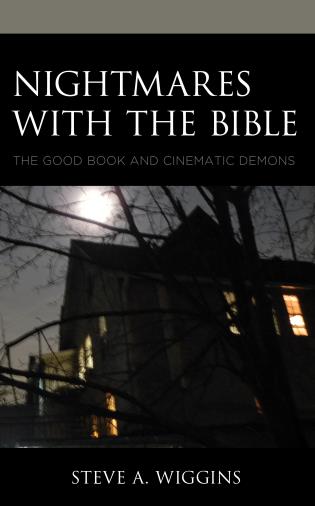The thing about ratings, as John Green astutely notes in The Anthropocene Reviewed, is that they are in many ways arbitrary. From the very few reviews of my own Nightmares with the Bible, I get the sense that people misunderstand the book. Or it could be that they just don’t like it. To each their own. To me it is quite a personal book. It is also a bookend to Holy Horror. They represent first steps into a new kind of endeavor for me—saying something (hopefully) intelligent about horror films. And writing books with no institutional support at all. There are several intentional interlacings between these two books and to understand one it helps to read the other. For those who want to get a sense of the way this addled brain works, in any case.
Holy Horror was literally one of those “if you see something say something” books. I had noticed something that apparently nobody else had—the way the Bible is presented in horror films tells us something about the Good Book. I have not seen every horror movie made. I know of nobody who has, or even can. I’d noticed a commonality, however, among those films. The Bible isn’t rare in horror. In fact, it’s quite common. I’ve done quite a lot of reading about religion in horror since then, and this is something that has to be taken into account when considering the effects of Christianization. It brings fear in its trail. Nightmares with the Bible is a bit more ambitious and a bit of a hybrid. That may be why its been reviewed so poorly. It is a continuation of the thesis—if you want to understand how people really believe, look at what popular culture teaches us.
What do we believe about demons? What The Exorcist taught us to believe. Anyone who looks at the history of the idea sees that this concept really only took off, after the Middle Ages, when movies reminded us of the threat. From the early modern period on, belief in demons and their impact on the world had been in decline. Anyone looking at the headlines today will have to wonder about the wisdom of that loss of interest. When The Exorcist hit, it struck a nerve. Since then demons have been back on the big screen time and time again, each showing providing more information on what to believe. I suspect those who’ve been rating the book really don’t get what I’m trying to do. At least, I tell myself, somebody’s reading my work.



Pingback: Holy Nightmares — Steve A. Wiggins | Talmidimblogging